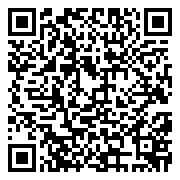

This training course is designed to equip participants with a comprehensive understanding of maintenance standards and their application across various industrial and organizational environments. It covers essential standard maintenance practices, best strategies, and how to integrate these standards into daily operations. Participants will learn how facility maintenance standards and maintenance reliability standards enhance asset efficiency, reliability, and compliance while helping organizations build standard maintenance agreements for effective maintenance management.
The course will also explore building maintenance, property maintenance, and facilities maintenance standards, providing insights into best practices and tools for implementing auto maintenance services and industrial maintenance solutions.
By the end of this course, participants will:
Understand the role of maintenance standards in optimizing facilities and maintenance operations.
Identify and apply relevant facility maintenance regulations, including ISO, SAE, and OEM standards.
Implement standard maintenance agreements to ensure compliance and efficiency.
Develop maintenance strategies aligned with property maintenance and building maintenance best practices.
Utilize performance metrics, audits, and continuous improvement models to sustain high maintenance performance.
What Are Maintenance Standards? Defining maintenance standards and their importance in equipment reliability and safety.
Overview of Key Maintenance Standards: ISO 55000, ISO 9001, and SAE, ASTM standards.
Types of Maintenance Standards: Preventive, predictive, corrective, and standard building maintenance approaches.
Key Principles in Maintenance: Equipment lifecycle, maintenance reliability standards, and root cause analysis (RCA).
High Maintenance Definition: Understanding the impact of poor maintenance on asset longevity and performance.
Creating a Maintenance Strategy: Aligning facility maintenance standards with operational goals.
Preventive Maintenance (PM) Programs: Scheduling maintenance to minimize downtime and reduce costs.
Predictive Maintenance (PdM) Techniques: Using IoT and data-driven insights to enhance reliability.
Standard Maintenance Practices for Facility Maintenance: Implementing structured procedures for efficient operations.
Developing a Standard Maintenance Contract: How to create agreements for outsourced maintenance services.
Compliance with Facility Maintenance Standards: Ensuring adherence to regulations and quality benchmarks.
Key Maintenance Performance Indicators (KPIs): Tracking and measuring maintenance effectiveness.
Best Practices for Maintenance Technicians: Enhancing efficiency through standard operating procedures (SOPs).
Ensuring Property and Building Maintenance Reliability: Applying industry-proven strategies for asset management.
The Standard Maintenance Request Process: Streamlining reporting and work order systems.
Using CMMS for Maintenance Management: Computerized Maintenance Management Systems (CMMS) for tracking compliance.
Digitalization in Maintenance: Leveraging smart sensors and IoT for real-time monitoring.
Training and Certification for Maintenance Technicians: Developing skilled professionals for maintenance supervision.
Managing Maintenance Supply and Equipment: Ensuring availability of resources for facility maintenance.
Outsourcing and Standard Maintenance Agreements: Working with vendors and contractors to maintain compliance.
Root Cause Analysis (RCA) and Failure Prevention: Identifying recurring maintenance issues and mitigating failures.
Lean and Six Sigma in Maintenance: Implementing continuous improvement strategies for efficiency.
Benchmarking Maintenance Performance: Evaluating facilities maintenance standards against industry best practices.
Developing a Maintenance Audit Program: Regular performance reviews to sustain compliance.
Sustaining Maintenance Standards Over Time: Building a culture of excellence in auto maintenance services and industrial maintenance.
Gain expertise in maintenance standards and facility maintenance best practices.
Learn how to implement standard maintenance agreements and optimize contracts.
Improve asset reliability with maintenance reliability standards and predictive maintenance techniques.
Develop skills to lead maintenance services efficiently and in compliance with global benchmarks.
Utilize maintenance supply and CMMS tools for better resource allocation.
Mastering maintenance standards is crucial for organizations looking to enhance operational efficiency, asset longevity, and compliance. This course provides in-depth training on facility maintenance, building maintenance, and property maintenance best practices. Whether you are a maintenance supervisor, a maintenance technician, or involved in facilities and maintenance, this course will equip you with the tools and knowledge needed to optimize maintenance operations effectively.
Enroll now and take your maintenance strategy to the next level!
